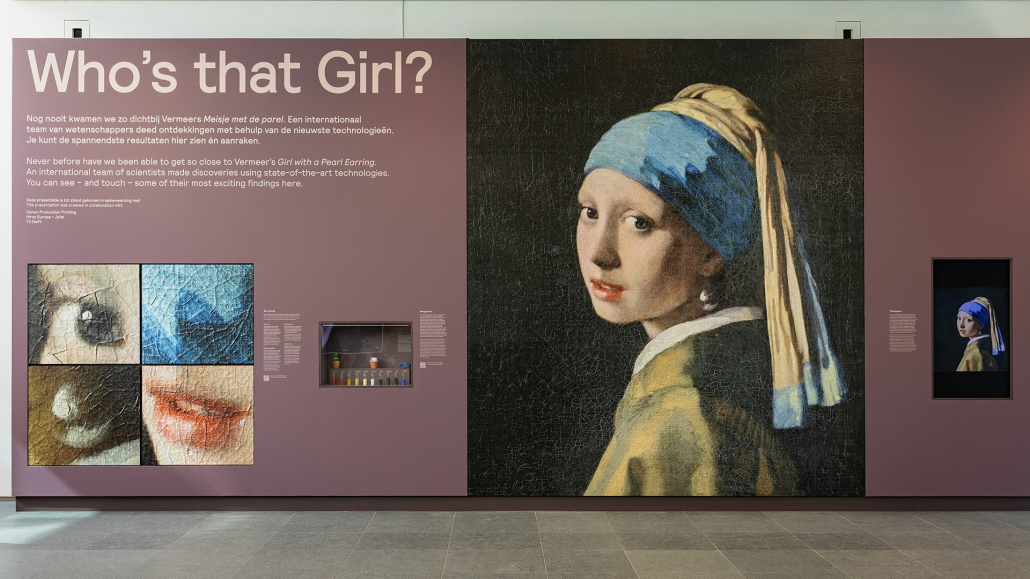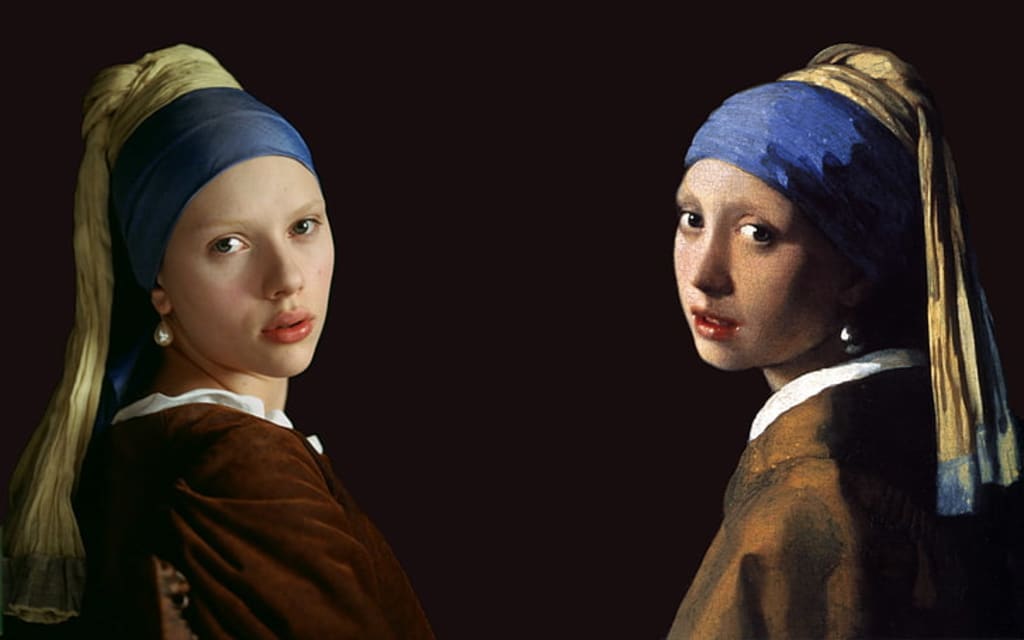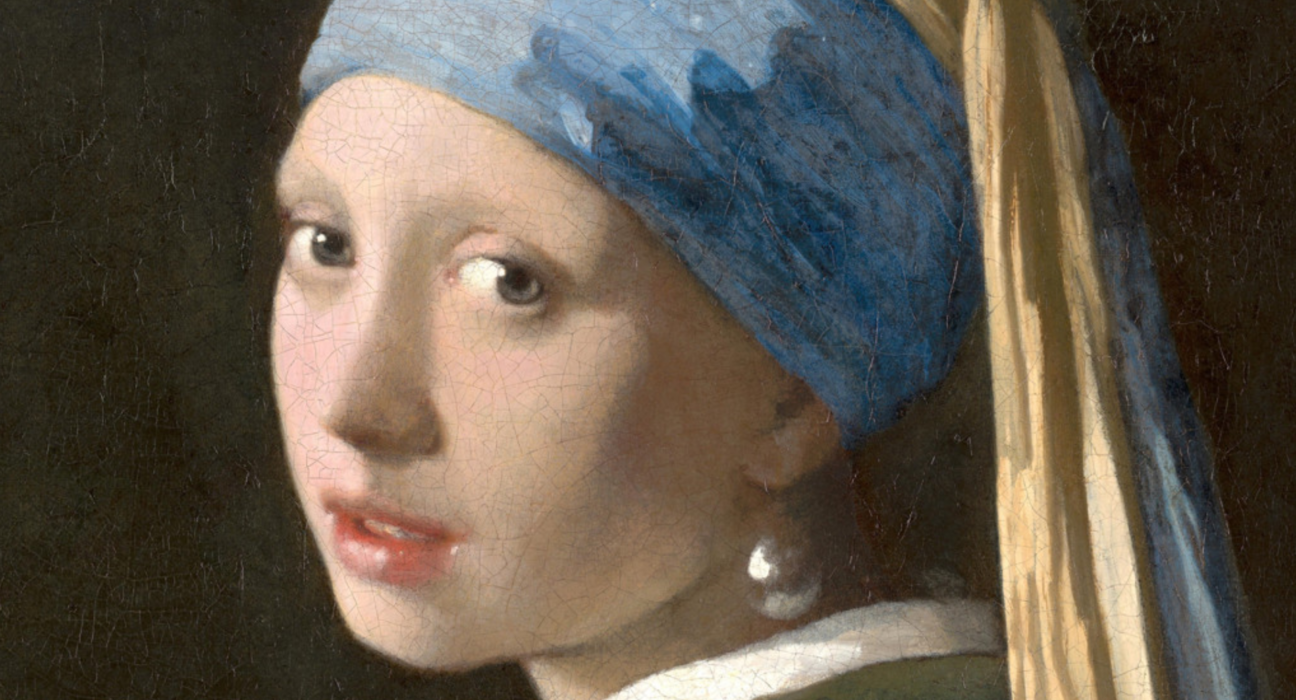Johannes Vermeer’s “Girl with a Pearl Earring” stands as an iconic masterpiece that transcends time, captivating viewers with its mysterious allure and artistic brilliance. This 17th-century Dutch Golden Age painting has become a symbol of beauty, intrigue, and cultural significance. In this comprehensive exploration, we will delve into the various facets of this renowned artwork, from its historical context to its enduring impact on contemporary art and culture.
The Making of a Masterpiece
“Girl with a Pearl Earring” is a masterpiece of light, color, and quiet introspection. Created during the Dutch Golden Age, it reflects both the artistic innovation and cultural influences of 17th-century Netherlands.
The Artist Behind the Canvas
Johannes Vermeer, born in Delft in 1632, was a Dutch Baroque Period painter whose works are characterized by their intimate domestic scenes and masterful use of light. Despite his relatively small body of work – only about 35 paintings are attributed to him – Vermeer’s impact on art history is immeasurable.
Vermeer’s life was marked by financial struggles and a dedication to his craft that often went unrecognized during his lifetime. His attention to detail and ability to capture moments of quiet contemplation set him apart from his contemporaries. The artist’s use of expensive pigments, such as lapis lazuli for the vibrant blues in his paintings, speaks to his commitment to quality despite his financial constraints.
Cultural Context and Artistic Innovation
To fully appreciate “Girl with a Pearl Earring,” it’s crucial to understand the cultural context of 17th-century Netherlands. This era, known as the Dutch Golden Age, was marked by great economic prosperity and a flourishing art market.
Vermeer’s innovative approach to portraiture, blending elements of genre painting with traditional portrait techniques, set him apart from his contemporaries. By portraying a seemingly ordinary girl with such dignity and presence, he challenged the conventions of the time and elevated everyday subjects to the realm of high art.
The exotic elements in the painting, such as the turban, reflect the growing global trade and cultural exchange of the period. This fusion of the familiar and the exotic adds another layer of intrigue to the work.
Techniques and Composition
Vermeer’s technical prowess is evident in every brushstroke of “Girl with a Pearl Earring.” The painting showcases his mastery of chiaroscuro, the dramatic use of light and shadow to create depth and volume.
The composition is deceptively simple yet powerfully effective. The girl is portrayed against a dark background, which makes her face and the pearl earring stand out prominently. The use of a turban adds an exotic touch to the otherwise simple attire, creating a sense of mystery and allure.
Vermeer’s choice of colors, particularly the rich blues and yellows, demonstrates his understanding of color theory and his ability to create harmony within the composition. The pearl earring itself serves as a focal point, drawing the viewer’s eye and adding a touch of luminosity to the painting.
Symbolism and Interpretation

“Girl with a Pearl Earring” is rich in symbolism, inviting various interpretations and analyses from art historians, critics, and viewers alike.
The Pearl: More Than Just an Accessory
The pearl earring, the painting’s namesake, holds significant symbolic value. In 17th-century Dutch society, pearls were often associated with purity and virginity. However, they could also symbolize vanity and worldly desires.
The contrast between the girl’s modest attire and the luxurious pearl creates an intriguing juxtaposition, hinting at deeper meanings. Some interpret this as a commentary on social class and the tension between spiritual and material values in Dutch society of the time.
The luminous quality of the pearl, expertly rendered by Vermeer, also serves as a metaphor for the inner light or soul of the subject, adding depth to the portrait beyond its physical appearance.
The Gaze: A Window to the Soul
Perhaps the most captivating aspect of the painting is the girl’s gaze. Her eyes, looking directly at the viewer, create an immediate and intimate connection. This direct engagement was somewhat unusual for portraits of the time, especially for depictions of servants or lower-class individuals.
The girl’s expression is often described as enigmatic, reminiscent of the Mona Lisa’s smile. It invites viewers to question what she might be thinking or feeling, fostering a sense of empathy and curiosity that transcends centuries.
Some art historians interpret this gaze as a statement on the agency and individuality of the subject, challenging the viewer to see beyond social status and recognize the humanity in all individuals.
The Model’s Identity: Fact vs. Fiction
One of the most intriguing aspects of “Girl with a Pearl Earring” is the identity of the model. While some speculate that she might have been Vermeer’s eldest daughter, Maria, others suggest she could have been a maid in his household.
The lack of concrete evidence regarding the model’s identity has fueled numerous theories and inspired works of fiction. Tracy Chevalier’s novel “Girl with a Pearl Earring” (1999) and the subsequent film adaptation (2003) starring Scarlett Johansson have further popularized the mysterious narrative surrounding the painting.
This ambiguity surrounding the model’s identity contributes to the painting’s allure, allowing viewers to project their own interpretations and emotions onto the canvas.
The Painting’s Journey Through Time

The history of “Girl with a Pearl Earring” is as fascinating as the artwork itself, filled with periods of obscurity, rediscovery, and restoration.
Lost and Found: The Painting’s Rediscovery
After Vermeer’s death in 1675, many of his works fell into obscurity. “Girl with a Pearl Earring” was no exception. For nearly two centuries, the painting’s whereabouts and even its existence were unknown to the wider world.
It wasn’t until 1881 that the painting resurfaced at an auction in The Hague. Purchased for a mere two guilders plus a thirty percent premium, it was in poor condition and attributed to an unknown artist. The buyer, Arnoldus Andries des Tombe, recognized its potential value and had it restored.
This rediscovery marked the beginning of a renewed interest in Vermeer’s work, eventually leading to his recognition as one of the great masters of Dutch painting.
Restoration and Preservation
Over the years, “Girl with a Pearl Earring” has undergone several restorations to preserve its beauty and integrity. The most significant of these occurred in 1994 when the painting was thoroughly examined and restored at the Mauritshuis museum in The Hague.
During this restoration, experts discovered that Vermeer had originally painted the girl with eyelashes, which had faded over time. They also found that the background, now a deep black-green, was originally a deeper, more vibrant green.
These restoration efforts have not only preserved the painting for future generations but have also provided valuable insights into Vermeer’s techniques and the original appearance of the work.
The Painting’s Home and Global Tours
“Girl with a Pearl Earring” has been housed at the Mauritshuis in The Hague since 1902. However, it has also traveled the world as part of various exhibitions, allowing millions of people to experience its beauty firsthand.
Notable tours include its visit to Japan in 2012, where it drew record crowds, and its appearance at the High Museum of Art in Atlanta in 2013. These global tours have contributed to the painting’s international fame and have allowed for cultural exchange and appreciation on a global scale.
Impact on Popular Culture and Contemporary Art

The influence of “Girl with a Pearl Earring” extends far beyond the realm of traditional art, permeating popular culture and inspiring contemporary artists across various mediums.
Literary and Cinematic Adaptations
Tracy Chevalier’s 1999 novel “Girl with a Pearl Earring” brought renewed attention to Vermeer’s masterpiece. The book, which imagines the circumstances surrounding the painting’s creation, became an international bestseller and was adapted into a critically acclaimed film in 2003, starring Scarlett Johansson and Colin Firth.
These adaptations have not only increased public interest in the painting but have also sparked discussions about the intersection of art, history, and fiction. They demonstrate how a single work of art can inspire creative interpretations across different media.
Influence on Contemporary Visual Arts
Many modern and contemporary artists have drawn inspiration from “Girl with a Pearl Earring,” either by directly referencing the painting or by exploring similar themes and techniques.
Photographer Hendrik Kerstens, for example, has created a series of portraits of his daughter that echo the composition and lighting of Vermeer’s work, but with contemporary twists. These photographs challenge viewers to reconsider the relationship between classical and modern aesthetics.
Street artist Banksy has also referenced the painting in his work, demonstrating its relevance even in urban, contemporary contexts. These reinterpretations highlight the timeless appeal of Vermeer’s masterpiece and its ability to resonate across different artistic movements and periods.
Merchandising and Pop Culture References
The image of the “Girl with a Pearl Earring” has become ubiquitous in popular culture, appearing on everything from coffee mugs and t-shirts to smartphone cases and posters. This widespread commercialization raises interesting questions about the commodification of art and the balance between accessibility and reverence for masterpieces.
The painting has also been referenced in numerous television shows, films, and advertisements, often as a shorthand for artistic beauty or cultural sophistication. These pop culture appearances have further cemented the painting’s status as a globally recognized icon.
Conclusion
:focal(1571x1047:1572x1048)/https://tf-cmsv2-smithsonianmag-media.s3.amazonaws.com/filer_public/14/c6/14c6b684-369b-4a21-a56c-70a3ad0c54d4/gettyimages-1244266290.jpg?fbclid=IwY2xjawImplVleHRuA2FlbQIxMAABHZuquasGLVQo7XTOAER1JRj7dPF4b1DN9tn4-I7tIX4n4zKTAGGLlMJcOg_aem_rj22FR9vezB21dMuxvo98g)
“Girl with a Pearl Earring” stands as a testament to the enduring power of art to captivate, inspire, and provoke thought across centuries. From its mysterious origins in Vermeer’s 17th-century studio to its global recognition in the 21st century, this masterpiece continues to enchant viewers with its enigmatic beauty and technical brilliance.
The painting’s journey through time – from obscurity to worldwide fame – mirrors the evolving appreciation of Vermeer’s genius. Its influence on literature, film, contemporary art, and popular culture demonstrates the profound impact a single work of art can have on society.
As we continue to gaze into the eyes of the girl with the pearl earring, we are reminded of the timeless qualities that define great art: the ability to evoke emotion, spark imagination, and connect us across time and culture. In this small canvas, Vermeer has captured not just a moment, but a window into the human soul that continues to resonate with viewers today, inviting endless interpretation and admiration.








